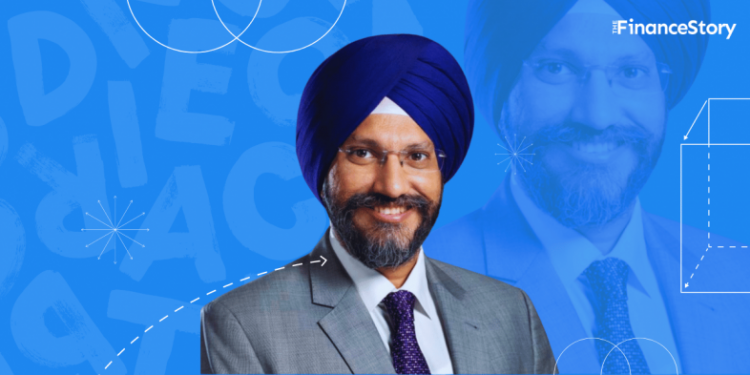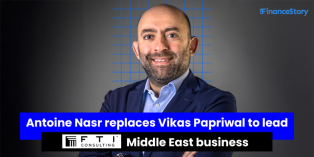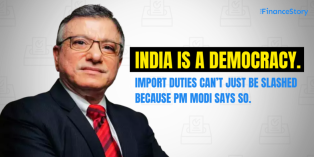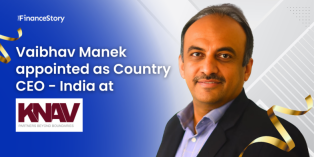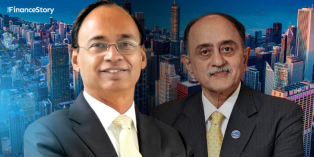- Hi, I’m Manpreet Ahuja.
- From my early days as a fresh-faced CA at PwC to leading the firm’s digital revolution as Chief Digital Officer.
- Picture this: starting from the ground up, rapidly climbing the ranks, and then taking on the challenge of steering PwC into the future with bold tech innovations.
- I reveal the exciting twists of my career, the challenges of disrupting traditional business models, and how technology is reshaping the game.
What was your career plan when you started?
My generation only had two real options – engineering and medicine. People frowned when a high performer would opt for Commerce.
Growing up, I read business magazines and would get excited reading articles featuring CEOs and CFOs and always aspired to walk the corporate hallways and be amidst the boards.
When it was time to pursue a career path, I had an impression that engineering was not necessarily the fast and exciting route to get to a corporate boardroom and so I chose Commerce.
(I was mistaken, the world has changed and engineering is an excellent foundation for practically anything under the sun in today’s day and age.)
In my exploration, I figured out that CA was perfect for me because it offered a good blend of academics and practical work experience at a young age.
At 19 years, I was doing my articles and getting to work with large listed companies across different sectors.
And here began an exciting journey!
Tell us about your career?
As a fresh CA, it was a dream come true to work with the Global Risk Management group at PwC in 2002.
Soon I started enjoying the constant run on the treadmill…Moving from one project to another…One client to another…Re-skilling myself to be relevant at all times.
Honestly, I had a bold ambition to fast-track my career, and in just 10 years I went from being a newbie to becoming a Risk Consulting Partner!
In those 10 years, I jumped through various six promotions various kinds of clients, role changes, and international opportunities.
As a Partner, I got an opportunity to run and manage my books of business, have my portfolio of clients, groom, and grow teams, and manage relationships, service delivery, operations, and markets.
It was a very satisfying milestone to have become a Partner, but soon I realized that this was only a platform for unlimited opportunities that lie ahead.
In 6 to 7 years of becoming a Partner, I was allowed to lead a business unit. I became the leader of the Risk Assurance Business Unit.
In 2021, the board appointed me as the Chief Digital Officer (CDO) at PwC, India.
Dream, Believe, and Execute has been my secret recipe at PwC.
How did you transition from leader of the Risk Business to CDO at PwC India?
When I became a Leader for the Risk Business at PwC, I got my team of Partners – I was managing a 1000-person team that consisted of CAs, Engineers, Architects, MBAs, process experts, etc.
As always, my team was excited to make a difference and how we could differentiate ourselves in the market.
As we got into the zone of differentiating ourselves in the market, I realized the importance of technology!
As risk consultants we give advice, we identify risks, and we monitor them but we don’t take ownership of managing them.
The focus needs to be not just on solving the problem, but on also ensuring that it never occurs again.
As you get into that zone you can’t operate without technology.
We may be a bunch of CAs, engineers MBAs, or process experts but at the end of the day, these capabilities have to come together on a tech platform to deliver value to clients.
To name but a few, the media sector is facing piracy as the biggest issue. To think of processes that will not only minimize piracy but also fully eliminate it.
Similarly, how can the pharma sector solve the risk of counterfeit drugs, and how can food companies solve for traceability across the entire supply chain?
The more we got exposed to technology, the more we realized that there were opportunities to address, thus building a unique proposition for our business.
My 19 years at PwC helped me earn the trust and credibility as a leader and in 2021; the firm allowed me to become the Chief Digital Officer.
It was a humbling experience to have gotten this role and I am on a steep learning curve here. I’d say that I am quite lucky to have been given opportunities that push me to excel.
The mission was clear how do we democratize access to technology for the team and deliver improved digital experience to clients along with higher value at lower cost?
Why a CA in a Digital Transformation Role? Does it mean you are a technologist?
I must say I am not the best technologist; there are smarter ones available.
Having said this, we do not need to be technologists to have a far-reaching vision in the role of CDO.
My role is disruption.
If a CDO aims to take big and bold disruptive enablement, then disruption is a team sport.
In my case, I am a business mind who understands the market, with a knowledge of how technology works. However, I am not the best coder, but I can hire one.
I keep my team technologically updated by making them aware that yesterday’s dreams are today’s reality. Application of the use cases in the business world through digital acumen is vital.
It would be exciting to know what your role as a CDO is?
I lead the firm through the next wave of digital transformation.
How? By driving the firm’s bold ambition of disrupting its traditional business model, offering a differentiated experience to clients and teams, and building a digital culture to drive citizen-led innovation.
To give you a perspective, my role involves:
- Internal and external transformation. It calls for reimagining how we can disrupt through technology the way we deliver value both internally and externally. This requires digital upskilling of teams and a culture of micro innovation.
- Lot of strategy building
- Fair amount of change management
- Building many business cases backed technology
- In addition, how is it that technology can deliver quantum value for its clients and communities?
I would say the role allows me to dream.
Did you have to pursue other courses to become a CDO?
The world is changing, and so is the technology and risks are also changing, business models are changing.
Like how can you be a consultant and advise the board to upskill themselves when you are not skilling yourself. So upskilling is constant habit for me.
Having said that, before I got into this digital role, a couple of years ago I actually registered for MIT Sloan School of Management’s executive program around design thinking. This was great framework to reimagine the possible on problem solving , not in the traditional linear way but in a non linear way.
As I got into this role I did a curriculum around digital strategies for businesses from Columbia Business School. So those certification became resonably handy which gave me time to reflect and adopt that learning into my client environment.
Is there a difference between the CTO, CIO, and CDO?
For companies that have an inherently strong engineering footprint with technology at the heart of everything they do, there will be a Chief Technology Officer (CTO). This role has elements of hardcore infrastructure and technology coming into play.
On the other hand, a Chief Information Officer (CIO) plays a strong operational role in leveraging those technologies and creating insights for the organization.
Lastly, a CDO is like the osmosis membrane between technological advancements that exist in the market and what the organization needs.
Essentially, a CDO is not a technologist, but a businessperson trying to make a business impact by leveraging technology and emerging a cloud ecosystem.
Some organizations can have all three of them, thus allowing the CDO to work with the CTO and CIO to deliver net business impact to the ground.
Technology is rapidly advancing; how do you stay up to date? Are you always upskilling yourself?
In a world of rapid change, technology, risks, and business models are also changing. Thus, people need to constantly upskill themselves to keep up with the rapid changes.
Having said that, I registered for MIT Sloan School of Management’s executive program a couple of years before I was appointed CDO. The program was around design thinking to reimagine other non-linear and unconventional problem-solving techniques.
As I got into the role of CDO, I did a curriculum around digital strategies for business from Columbia Business School. The certifications came in handy and they gave me time to reflect and adapt the learnings to my clients’ environment.
What sort of organizational cultural changes do you think are required to bring about digital transformation adoption?
In any digital transformation, one needs to dream and then enable. The real impact will come when the whole organization begins to start adopting that enablement.
To drive the adoption, we need to deliver a culture change where the organization at a large scale believes in what the CDO is doing.
The forefront of the culture change is through upskilling. This is because the organization cannot obtain quantum leaps without a certain level of digital IQ.
Climbing from CA fresher to Partner and then CDO – what is your advice to consultants?
When I look back at my career, I feel it is the ability to dream and bring lots of energy behind the dreams that made a big difference.
Don’t let depth and expertise be a bottleneck broadening your horizons. At some stage, convert depth into breadth. Keep learning.
Never hesitate to dream, for even the greatest walls are from the ground.
Never hesitate to share your dreams and seek help from seniors and peers and equally important to have diverse teams engaged, inspired, and excited.




